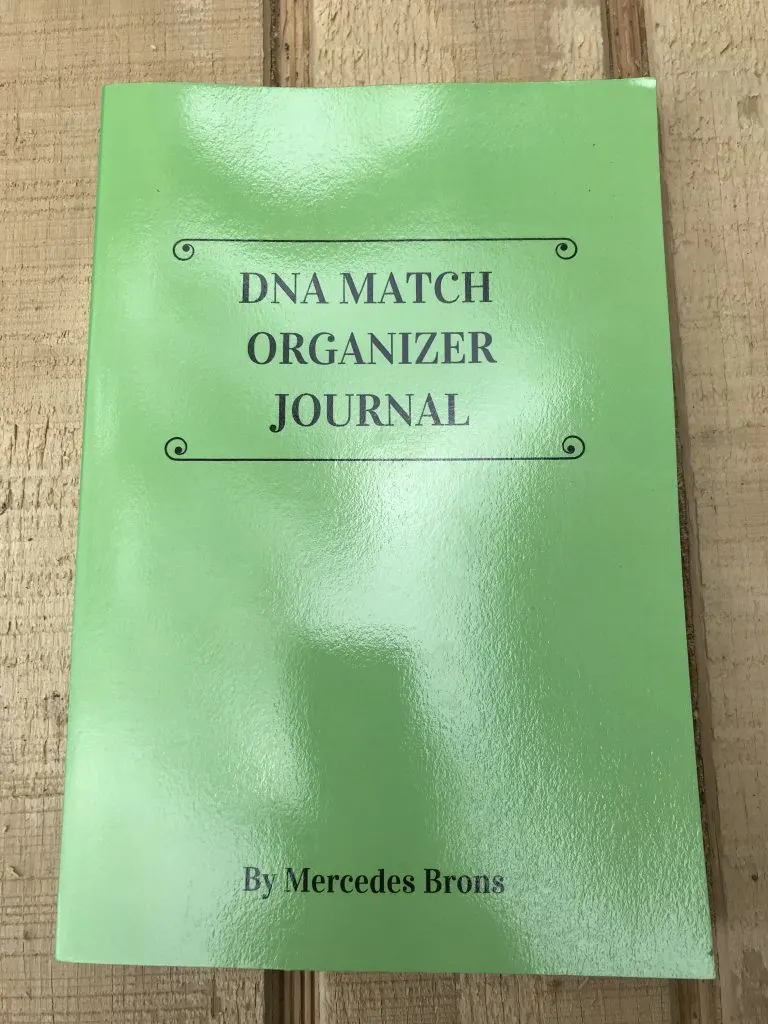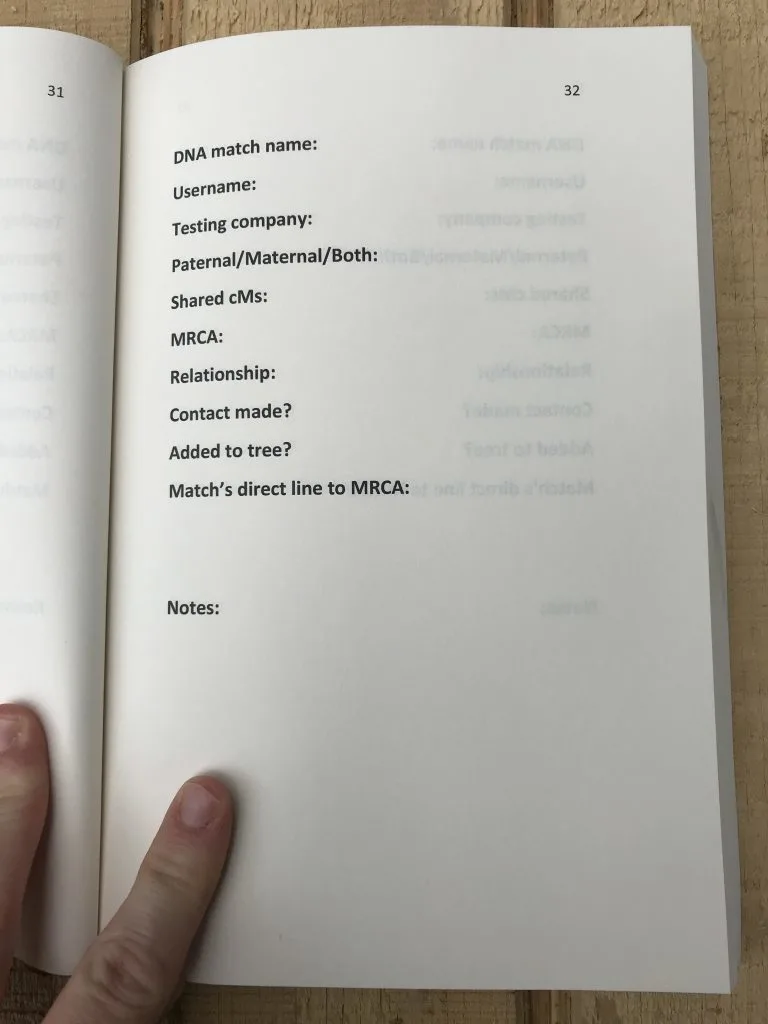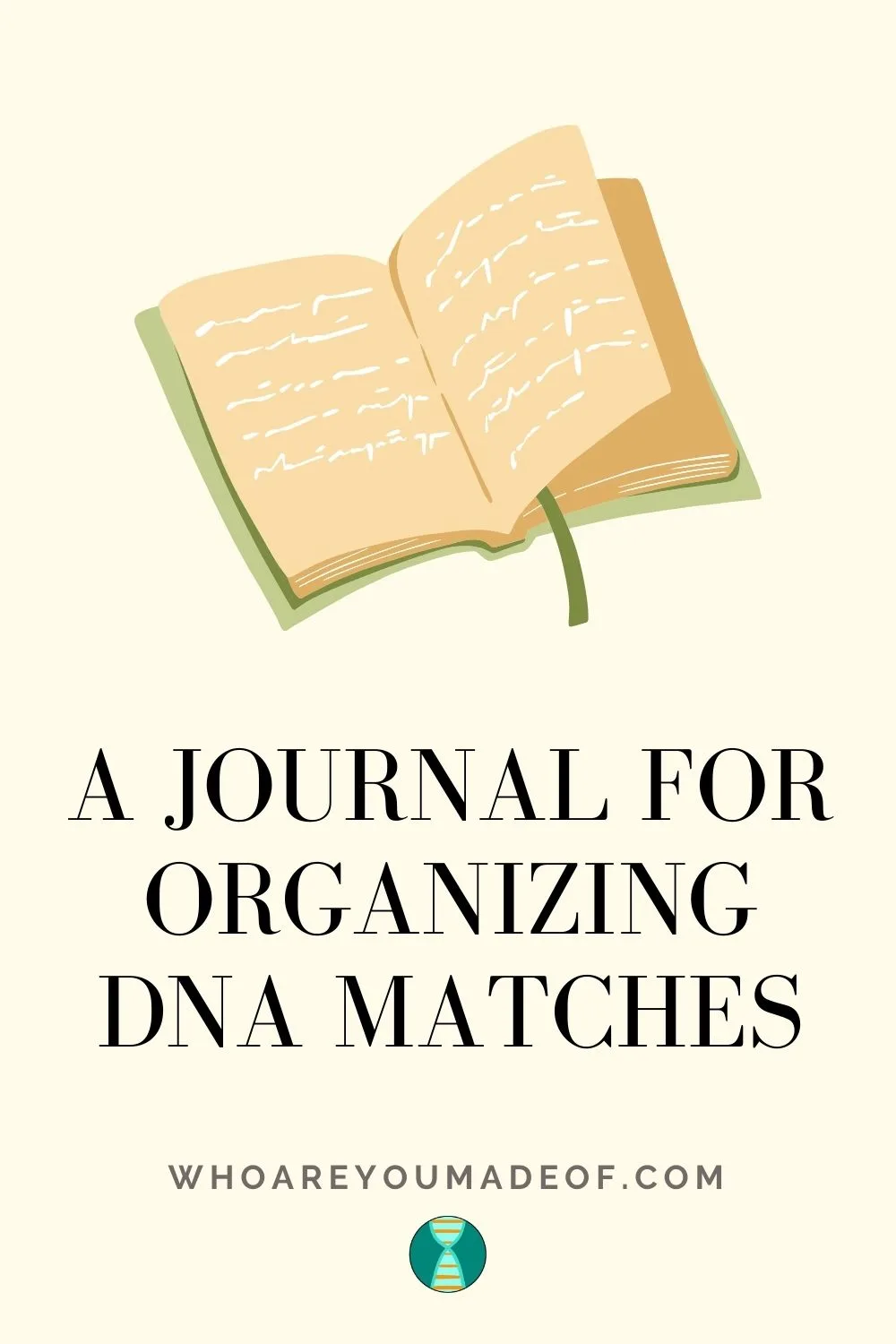Do you want to know a great way to keep your research about DNA matches organized? In this post, learn about my DNA Match Organizer Journal.
While there are lots of ways to keep your DNA matches organized, I love having a dedicated notebook. In fact, I love having a notebook so much that I decided to make my notebook into a journal to publish on Amazon.
Take a look below:

That way, I could have a nice, softcover journal where I can keep my notes. Additionally, it looks WAY better on a bookshelf than a spiral notebook, which is what I was using before.
To find out how to use the journal and what it looks like inside, keep reading. If you are the type that prefers to keep everything on the computer, you might be interested in learning about my downloadable spreadsheet for organizing matches.

What does the journal look like inside?
The journal has over 210 pages, beginning with one of my favorite genealogy quotes. Then, you will find instructions and definitions of terms used in the journal.
There is room for journal entries on 200 DNA matches, which should prove to be plenty of space to work on your DNA matches for a nice, long while.

This journal promises to take your DNA match research to the next level, and is a great way to keep them organized across DNA testing sites.
I have done DNA tests with or uploaded my DNA to all of the top DNA testing sites, and I also manage DNA tests for several family members.
This means that I have a lot of DNA matches to keep track of. I have found that writing down my notes is a huge help.
This journal does not have to replace a spreadsheet, which is another popular method for keeping track of DNA matches. In fact, you could add DNA matches to the spreadsheet once you have completed their entry in the journal.
How to use the DNA Match Organizer Journal
Starting with the first people in your DNA match list, enter in as much information as you know about your relationship with them. It's important to enter the details about which company's match list you found them on, too, in order to remember them in the future.
If you haven't yet figured out how you are related to your DNA match, you might find the following post helpful. It's a list of my top tips for figuring out how you are connected to your DNA match.
It's very important to figure out how you are connected to your top matches, if possible. This will help you learn as much as you can about your family tree and will make figuring out your connection to other DNA matches easier in the future.
I provided a prompt in the journal asking "Added to tree?" in order to remind myself and other users of the journal to add their DNA match and their direct line to their family tree. This is crucial to helping speed up your research in the future, and makes for a better and more complete family tree.
When my journal is filled up with matches, I just get another one. I have two filled journals so far, and I keep them on the bookshelf by my desk for easy access when I am working on my DNA matches.
DNA matches are my favorite aspect of DNA testing, and so I can imagine the day when I have tons of books filled with complete information about my connection to many hundreds of DNA matches.
Hey, a girl can dream!
How to buy the journal for organizing DNA matches
As I mentioned at the beginning of this post, I published this journal on Amazon. It should be available from the Amazon marketplace in eight countries (see links below), allowing for purchase in most parts of the world.
To get the journal, just click the link to the Amazon marketplace that you usually order from:
I hope to make the journal more widely available in the future, especially to those who can't purchase from Amazon where they live.

Conclusion
I hope that this post helped you learn about how I keep my DNA match research (and DNA matches) organized.
If you end up trying out the journal, I would be so grateful if you took the time to leave a positive review on Amazon to help other people who are looking for a similar solution for keeping their DNA matches in order.
As always, if you have any questions about the journal or something else that you read in this post, I would love for you to ask your question in the discussion below.
Thanks for stopping by today!

